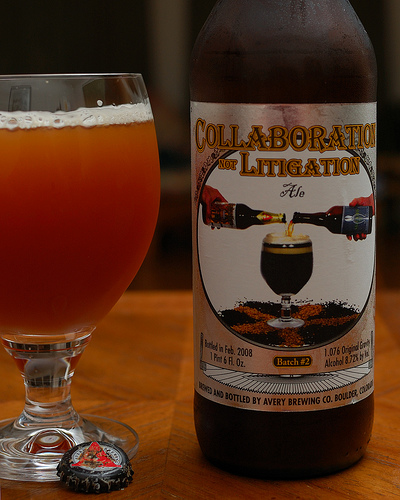Collaborations between university and industry (UI collaborations) can be fairly complicated. This is the case in France, as in other countries. In the first part of this article, I gave a summary of best practices in terms of UI collaborations. These best practices were extracted from a report of a study conducted by the National Council of University Research Administrators and the Industrial Research Institute in the United States.
In this second part of the article, I’d like to provide some additional best practices compiled from a study that Edward Spencer Calder conducted as part of his Masters at MIT.
The best practices outlined below are specifically designed for industry, nevertheless it is useful to be aware of them when you are a researcher.
Introduction
Calder starts by the finding highlighted by Lambert in his report “business-university collaboration”: public research is extremely powerful in the context of scientific research, but the industry is facing many difficulties to extract value.
Lambert recommends
- For the industry to learn how to extract the value of innovative ideas generated by public research,
- Develop a set of best practices in knowledge transfer.
These two recommendations are the starting point of Calder’s report. The findings of Calder were drawn after studying quantitatively 70 projects / collaborations with 17 companies in various industries (pharmaceutical, automotive, IT, aerospace, electronics etc..)
Results and Impact are poorly correlated
Difference between Result and Impact in a collaboration :
Result: tangible result of the project, such as a scientific publication.
Impact: positive impact of the project on the competitiveness and productivity of the company.
The Results and Impact of each of the collaborations were measured quantitatively by identifying a set of scales and ad hoc criteria. It is shown that there is no systematic correlation between the Results and the Impact of a collaboration. Indeed, very good scientific results can be produced without gains in competitiveness and productivity for the partner company. Good management can maximize the correlation.
The maximum profit and impact generally lies in human resources: in particular, the identification of good students (PhD student) during collaboration often leads to hiring her later on. Once hired, that person maintains relationships / strong collaboration with the group she was part of.
Encourage active boundary Agents
Boundary Agents are people within a company that collect external information, and then process and encode it for internal use. These agents have a fundamental role in organizations with a strong flow of information from sub-units or from outside. A boundary agent has the following qualities:
- Source of information and ideas
- Excellent internal communication (with other staff)
- Many Contacts outside
- Excellent bridge between different units or with outside.
The boundary agents play a crucial role in the UI collaborations.
Indeed, during a collaboration, the fact that the project manager (from industry) acts as a boundary agent has a positive influence on both the Results and the Impact, even (especially) for research activities very upstream. In other words, the mere fact of getting together regularly allows researchers to unearth extremely useful information for both parties, allowing them to increase the effectiveness of their collaboration.
Duration, geographical separation and alignment
Sustainable collaborations (long term) are more valuable both for the Results and for their Impact on the company. This point had already been mentioned in the first part of this article.
The geographic separation does not affect the Results nor on the Impact. I find this result particularly surprising, counter-intuitive and extremely interesting. It is an encouragement to all open innovation intermediaries (as PRESANS) based on a global expert network.
A perfect alignment is critical because an interesting research, well done and of excellent quality may be useless for a company. Unless objectives and methods are aligned with the practices, the strategy and the needs of the company, research collaboration may not be worth the investment cost. The challenge for companies is to ensure sufficient alignment without too many constraints on the project.
Conclusion
In conclusion, let’s keep in mind that university – industry collaborations, an excellent research giving rise to relevant Results can have very little Impact on the company if the partnership is not well aligned with the company strategy and if it is not closely managed by the project manager (from the company) to promote bilateral exchange of information.
References and links
References
- The original report is really interesting and I highly recommend its reading for more more information.
- Lambert Report.
Illustration
- The illustration of the article “Avery Collaboration Beer” is licensed under Creative Commons and is available here.



Trackbacks/Pingbacks